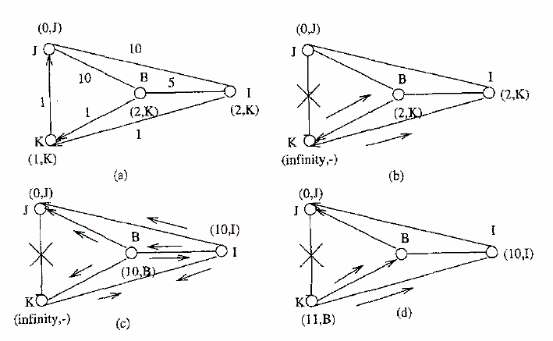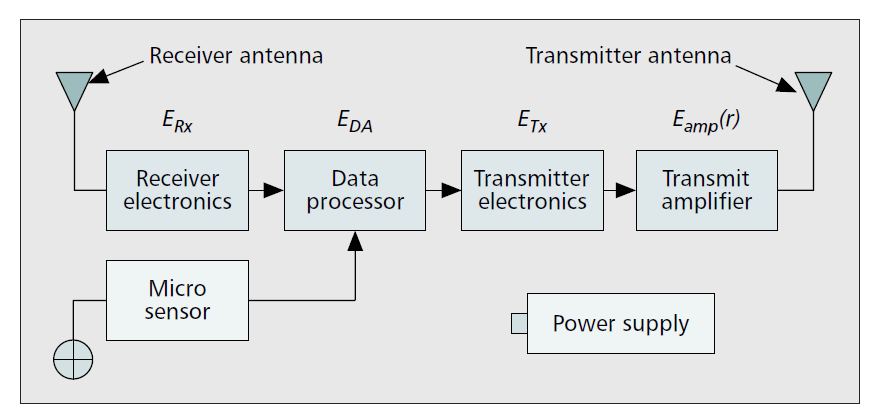Select one topic from the below areasProcess synchronizationCPU schedulingDeadlockChoose two paper that relevant to the selected area, read and summarize the research work in the paperThe paper should
Paper 1
Title : An Efficient Routing Protocol for Wireless Networks
Authors : Shree Murthy and J.J. Garcia-Luna-Aceves, University of California
Details : Mobile Networks and Applications (1996) 183-197
(i) What is author’s contribution in the paper ?
The author here presents the Wireless Routing Protocol (WRP) because in this protocol, the routing nodes communicate the distance and second to-last hop for each destination. The author used this protocol because it reduces the number of cases in which a temporary routing root can occur, which depicts it has fast convergence properties. Author also compared WRP with other protocols such as Distributed Bellman-Ford Algorithm (DBF), Diffusing Update Algorithm (DUAL, a loop-free distance-vector algorithm) and an Ideal Link-state Algorithm (ILS) which computes the internet routing based on shortest path routing algorithms. According to DBF, a routing node knows the length of the shortest path from each neighbor to every network destination and this information is used to compute the shortest path and successor in the path to each destination. A major performance problem with DBF is that it takes a very long time to update the routing tables of network nodes after network partitions, node failures, or increase in network congestion. A loop-free routing algorithm called DUAL is also introduced, which is based on internodal coordination that can span multiple hops. DUAL also eliminates temporary routing loops. Whereas, ILS consists of ideal flooding of link-state updates in order to replicate the topology of the network at each router. The limitation of ILS is that if a node failure is modeled as all links incident on that node failing at the same time. These algorithms have some major performances issues , so to overcome these issues WRP is introduced which gives the correct routing tables with a finite time after topology changes. WRP is designed to run on top of the medium-access control protocol of a wireless network. The results compared in the paper indicates that the WRP is most efficient one among all.
(ii) Show steps of successful communication.
To understand the working of WRP, a network as an undirected graph represented as G(V, E), where V is the set of nodes and E is the set of links (or edges) connecting the nodes. Each node represents a router and is a computing unit involving a processor, local memory and input and output queues with unlimited capacity.
However, for the purposes of routing-table updating, a node A can consider another node B to be adjacent (we call such a node a "neighbor") if there is radio connectivity between A and B and A receives update messages from B.
A functional bidirectional link connecting the nodes is assigned a positive weight in each direction. All messages received (transmitted) by a node are put in an input (output) queue and are processed in FIFO order.
Link is assumed to exist between two nodes only if there is radio connectivity between the two nodes and they can exchange update messages reliably with a certain probability of success.
Update messages may be lost or corrupted due to changes in radio connectivity or jamming. Reliable transmission of update messages is implemented by means of retransmissions.
After receiving an update message free of errors, a node is required to send a positive acknowledgment (ACK) indicating that it has a good radio connectivity and has processed the update message.
In addition to ACKs, the connectivity can also be ascertained with the receipt of any message from a neighbor (which need not be an update message).
If a node fails to receive any type of message from a neighbor for a specified amount of time (e.g., three or
four times the HelloInterval known as the RouterDead- Interval), the node must assume that connectivity with that neighbor has been lost.
Summary of Steps:
Information exchanged among nodes.
Routing-table updating.
Processing an Update.
Sending new and retransmitted update messages.
Processing an ACK.
Handling topology and link-cost changes.

Fig: Screenshot of operation of algorithm
Properties of WRP:
1. After a finite time interval T, the routing table structures at all routers will form the final shortest path.
2. If router j is not connected to router i in the final topology, then the distance between the two routers is equal to infinity for all time after T(H(i, ∞) + 1).
3. When PFA(Path Finding Algorithm)terminates, the link weights maintained in the distance table must be in the final graph.
(iii) What is the Pro of the chosen protocol ?
It reduces the number of cases in which routing loops can occur.
Reliable exchange of updated messages.
Time Complexity of WRP is O(h) in the worst-case, where h is the height of the routing tree.
50% improvement in the convergence time as compared to DUAL and other routing algorithms.
Adaptive to topology changes.
Loop free.
Less nodes.
It is fully distributed i.e. localized.
(iv) What is the Con of the chosen protocol ?
Mobility- There are many chances of breakage of paths due to mobility, due to this reason it has to change the topology.
Terminal Errors- It means collision of data packets is possible when both the nodes are hidden, and two nodes are trying to send data to the same node.
Path Updation- It sometimes uses the unstable path if we do not update the routing path. It does not update automatically.
Security- The data packets are vulnerable to attacks i.e. hijacking the bandwidth of the network.
SUMMARY
Paper 2
Title : A Centralized Energy-Efficient Routing Protocol for Wireless Sensor Networks
Authors : Siva D. Muruganathan, Daniel C. F. Ma, Rolly I. Bhasin, And Abraham O. Fapojuwo, University of Calgary
Details : IEEE Radio Communications • March 2005
(i) What is author’s contribution in the paper ?
Wireless networks have very limited energy resources. Hence, energy efficiency is a key design issue that needs to be enhanced in order to improve the life span of the network. Several protocols have been proposed to improve the energy supply of the network. Author here has proposed a centralized routing protocol called Base-Station Controlled Dynamic Clustering Protocol (BCDCP), which distributes the energy dissipation evenly among all sensor nodes to improve network lifetime and average energy savings. In the article, then the BCDCP is compared to several other clustering-based scheme i.e. Low- Energy Adaptive Clustering Hierarchy (LEACH), LEACH centralized (LEACH-C), and Power-Efficient Gathering in Sensor Information Systems (PEGASIS).
There are still some shortcomings associated with protocols utilizing these techniques. In the worst case, both SPIN and directed diffusion suffer from the amount of overhead energy spent in activities such as advertising, requesting, and gradient setup. The major performance issue in these protocols is excessive time spent in such activities might not suit some applications that require the sensor nodes to respond quickly to an emergency situation However, the application of conventional clustering to wireless sensor networks does not improve network lifetime since the conventional clustering scheme assumes the cluster heads to be fixed, and thus requires them to be high-energy nodes.
That is why, BCDCP is introduced, which utilizes a high-energy base station to set up clusters and routing paths, perform randomized rotation of cluster heads, and carry out other energy-intensive tasks. BCDCP yields an improved system lifetime and better energy savings over the abovementioned clustering-based routing protocols. Results in the article shows that after comparing all the protocols, BCDCP reduces overall energy consumption and improves network lifetime over its comparatives.
(ii) Show steps of successful communication.
Typical sensor node consists of four major components: a data processor unit; a micro-sensor; a radio communication subsystem that consists of transmitter/ receiver electronics, antennae, and an amplifier; and a power supply unit.
The two key elements considered in the design of BCDCP are the sensor nodes and base station.
The data communication phase consists of three major activities:
• Data gathering
• Data fusion
• Data routing

The proposed protocol assumes the following properties.
The sensor nodes are energy constrained with a uniform initial energy allocation.
The sink located very far from the c1usterheads.
All the sensor nodes are stationary with limited energy.
All the sensor nodes are equipped with power control capabilities to vary their transmitting power.
The network is assumed to be continuous data delivery model.
(iii) What is the Pro of the chosen protocol ?
It is relieved of performing energy intensive computational tasks such as cluster setup, cluster head selection, routing path formation, and TDMA schedule creation.
The proposed BCDCP protocol is assessed by simulation and compared to other clustering-based protocols (LEACH, LEACH-C, and PEGASIS).
BCDCP outperforms its comparatives by uniformly placing cluster heads throughout the whole sensor field, performing balanced clustering
The performance gain of BCDCP over its counterparts increases with the area of the sensor field
BCDCP provides an energy efficient routing scheme suitable for a vast range of sensing applications.
(iv) What is the Con of the chosen protocol ?
There is some issue related to hardware design of base station.
Cognitive radio routing protocols cannot be implemented on real networks
The performance metrics of a network based on the industrial specifications is not resolved.



